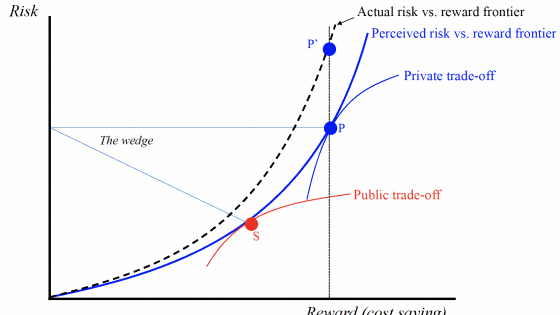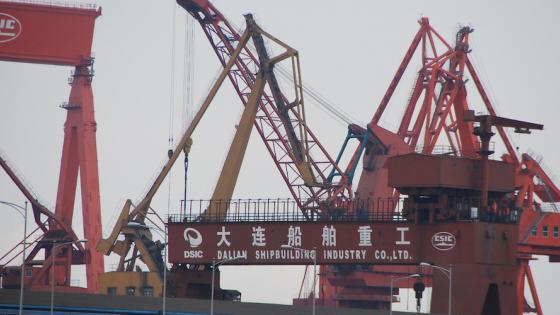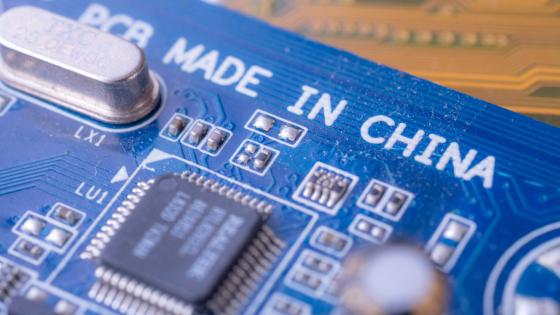Industrial policies, once scoffed at by mainstream economists, have surged in prominence over the last 15 years, a trend magnified following the 2008 global financial crisis (Rodrik 2010, Vogel 2021). Within the recent five-year context marked by the ongoing US-China trade war and great power high-tech rivalry (Zhang 2018, Zhang and Chang 2021, Eichengreen 2023), an increasing number of countries have augmented their reliance on industrial policies in a bid to bolster international competitiveness.
Significantly, the Chinese central government has ardently promoted two strategic high-tech industries – 5G and supercomputing – with robust industrial policies. Intriguingly, while the supercomputing industry adeptly adapted to US embargoes in 2015 by pivoting to domestically produced components as alternatives to US imports, China's 5G industry failed to do so when faced with similar US sanctions in May 2019. Why could the 5G industry not produce key upstream components, whereas the supercomputing industry could?
Centralised governance in China exerts an influential grip over its economic, business, and social activities (Lardy 2019, Lee and O’Brien 2021). Previous scholarship has shown the causal effects of industrial policies on China’s domestic industrial development (Lin 2017, Wang et al. 2022). Building upon the existing literature, in my recent paper (Zhang 2023), I address this puzzle with a focus on China’s central government-level 5G and supercomputing industrial policies. I also endeavour to provide insights into the driving factors steering these policies. It is imperative to clarify that I do not solely attribute the divergent outcomes to industrial policies; however, devoid of a critical examination of the 5G and supercomputing industrial policies, one remains bereft of a comprehensive understanding of the disparate development trajectories of the aforementioned industries. Further, an in-depth analysis of the Chinese 5G and supercomputing industrial policies can contribute to academic and policy debates on the efficacy of industrial policies, especially how they should be practiced (Rodrik 2010, Kalouptsidi et al 2019).
Prior to presenting the discoveries, it is worth noting that both the 5G and supercomputing industries encompass upstream, midstream, and downstream segments. In the Chinese context, upstream refers to the research and development (R&D) and the production of core components such as 5G and supercomputing chips and software. Midstream signifies infrastructure construction like 5G networks, base stations, and supercomputing centres. Downstream points to applications and related services. Notably, the upstream segment is crucial for enabling 5G infrastructure construction and the operation of supercomputers.
Divergent 5G and supercomputing industrial policies
Using natural language processing, a machine-learning technique, and qualitative content analysis based on meticulously collected official documents and secondary sources, I identify salient policy differences. The principal findings are as follows.
First, China commenced the promulgation of 5G industrial policies in 2015. Before May 2019, these policies were significantly unbalanced. Within the corpus of twelve official documents from 2015 to May 2019 concerning 5G, words epitomising midstream and downstream activities – such as commercial application, network, and industrialisation – overshadowed their upstream counterparts, indicating that the central government put much less weight on the upstream than the midstream and downstream. While these documents sporadically mentioned phrases associated with 5G chips and components, signalling a modicum of attention to the upstream segment, a careful review reveals that merely four documents (33.3%) mentioned developing the upstream, whereas seven (58.3%) and a staggering twelve (100%) championed midstream and downstream advancements, respectively. Alarmingly, the scant references to 5G chip development were bereft of specificity, leaving a void in strategic prioritisation. Consequently, Chinese upstream companies lacked incentives and sufficient resources, thereby either focusing on labour-intensive production or relying on purchasing foreign core components.
Second, in stark contrast, supercomputing industrial policies were well designed, with the central government accentuating the acceleration of upgrading the entire industrial chain. The most commonly used words in the policy documents were intellectual property rights, research, technology, independence, infrastructure, and industrialisation. These documents also highlighted the development of essential parts, software innovation, and integrated circuits. The 863 Program – a national-level industrial policy spanning from 1986 to 2016 – played an indispensable role in achieving technological independence in the supercomputing industry. This programme birthed an expert responsibility system, ensuring the supercomputing industrial policy advice and design by the experts resonated with the overarching vision of the central government. It also made government-funded public entities instead of private companies the dominant player in the research, development, and deployment of supercomputers. Such an arrangement prevented the problem we have witnessed in the case of 5G development. Public entities’ objective was not to reap short-term economic profits; rather, they served Chinese national interests and focused on long-term technological advancement.
Third, from 2021 onward, a marked inflection was discernible in the 5G industrial policies, specifying the types of 5G chips China aspired to indigenously produce. Certain policy documents have explicitly demanded comprehensive R&D encompassing not just the chips but also other upstream components. This policy shift had immediate effects, driving more Chinese companies to flock to the upstream and develop their own components with venture capital funding. However, an analytical overview intimates that the overall policy attention devoted to the upstream segment remains much lower (28.6%), in contrast to the midstream (64.3%) and downstream (92.9%).
Motivations for the policy divergence
Drawing from political economics frameworks, I point out that domestically, the allure of swift GDP augmentation stemming from 5G infrastructure investments and downstream applications juxtaposed against the resource-intensive and high-risk nature of upstream research largely influenced policy choices. Internationally, a propitious environment made it easy for China to import key 5G upstream components. Consequently, China’s 5G policies between 2015 and May 2019 exhibited an inadvertent sidelining of upstream endeavours. Although policies have started to rebalance since 2021, significant challenges in internal economic transitions (Zhang 2011, Pettis 2021) coupled with exogenous supply shocks (Freeman and Baldwin 2022) rendered infrastructure investment and commercial applications the sole viable conduits for economic growth.
In contrast, a confluence of international antagonism, domestic impetus, and Deng Xiaoping’s imprimatur shaped the Chinese supercomputing policy landscape and trajectory in its own unique way. On the international front, the lingering animosities of the Cold War era in the 1980s galvanised an unwavering commitment among the Chinese top leaders and strategic scientists to indigenously develop high technologies including supercomputers. At the heart of this domestic confluence was Deng Xiaoping, China’s paramount leader of the era, who decisively spearheaded the 863 Program that spanned three decades and cast a long shadow over China’s supercomputing-related industrial policies.
Lessons learned
Many scholars accept the claim that industrial policy can successfully promote the development of targeted industries. My analysis, however, shows that China’s 5G industrial policies, particularly from 2015 to May 2019, misdirected companies and investors, hampered optimal resource distribution, and skewed industrial progression. This observation further implies that immense national economic resources and state intervention may not necessarily translate into industrial advancement and technological superiority.
A salient takeaway centres on the imperative of formulating astute industrial policies. For strategic high-tech industries critical for economic growth and national security, industrial policies should not overlook the development of any segment of the industrial chain. Core components and technologies need to be self-built. Furthermore, the nature of these strategic sectors mandates profound governmental stewardship rather than a sheer dependence on market dynamics. The strategic amalgamation of national resources, leveraging national labs and publicly funded academic institutions for pioneering R&D endeavours, instituting stringent oversight and accountability frameworks, and fostering symbiotic alliances with technically adept enterprises can collectively engender well-balanced industrial evolution. This point finds strong resonance in the trajectory of China’s supercomputing industry.
Lastly, as countries increasingly recalibrate their industrial policies, the foundational tenets of the liberal international economic order (Roland 2021) are under threat. Industrial policies such as local content requirements and high-tech export restrictions thwart foreign countries’ access to domestic markets, impede the unfettered dissemination of knowledge and technology, and engender geoeconomic rivalry.
References
Eichengreen, B (2023), “International Finance and Geopolitics”, Asian Economic Policy Review 9999: 1-17.
Freeman, R and R Baldwin (2022), “Global supply chain risk and resilience”, VoxEU.org, 6 April.
Kalouptsidi, M, N Zahur, and P J Barwick (2019), “Industrial policy: Lessons from China”, VoxEU.org, 11 September.
Lardy, N (2019), The State Strikes Back: The End of Economic Reform in China, The Peterson Institute for International Economics.
Lee, S and Kevin O’Brien (2021), “Adapting in difficult circumstances: protestant pastors and the Xi Jinping effect”, Journal of Contemporary China 30: 902-914.
Lin, J Y (2017), “Industrial policy and China’s economic development: from the perspective of new structural economics”, Fudan Journal of the Humanities and Social Sciences 10: 419-429.
Pettis, M (2021), “China’s private sector is a victim of the CCP’s growth model”, Carnegie Endowment for International Peace, 24 November.
Rodrik, D (2010), “The return of industrial policy”, Project Syndicate, 12 April.
Roland, G (2021), “China’s rise and its implications for International Relations and Northeast Asia”, Asia and the Global Economy 1(2): 100016.
Vogel, S (2021), “Level Up America: The Case for Industrial Policy and How to Do it Right”, Niskanen Center, 28 April.
Wang, X, K Sun and Z Xiao (2022), “Industrial policy and the rise of China’s strategic emerging industries”, American Economic Association.
Zhang, Y (2011), “China’s economic growth ‘miracle’ and its outlook by 2020”, VoxEU.org, 13 November.
Zhang, Y (2018), “The US–China Trade War: A Political and Economic Analysis”, Indian Journal of Asian Affairs 31(1/2): 53-74.
Zhang, Y and Cheng Chang (2021), “Modeling the US-China Trade Conflict: A Utility Theory Approach”, Journal of Applied Mathematics and Computation 5(2): 84-88.
Zhang, Y (2023), “China’s 5G and supercomputing industrial policies: A critical (comparative) analysis”, Global Policy 00: 1-14.



